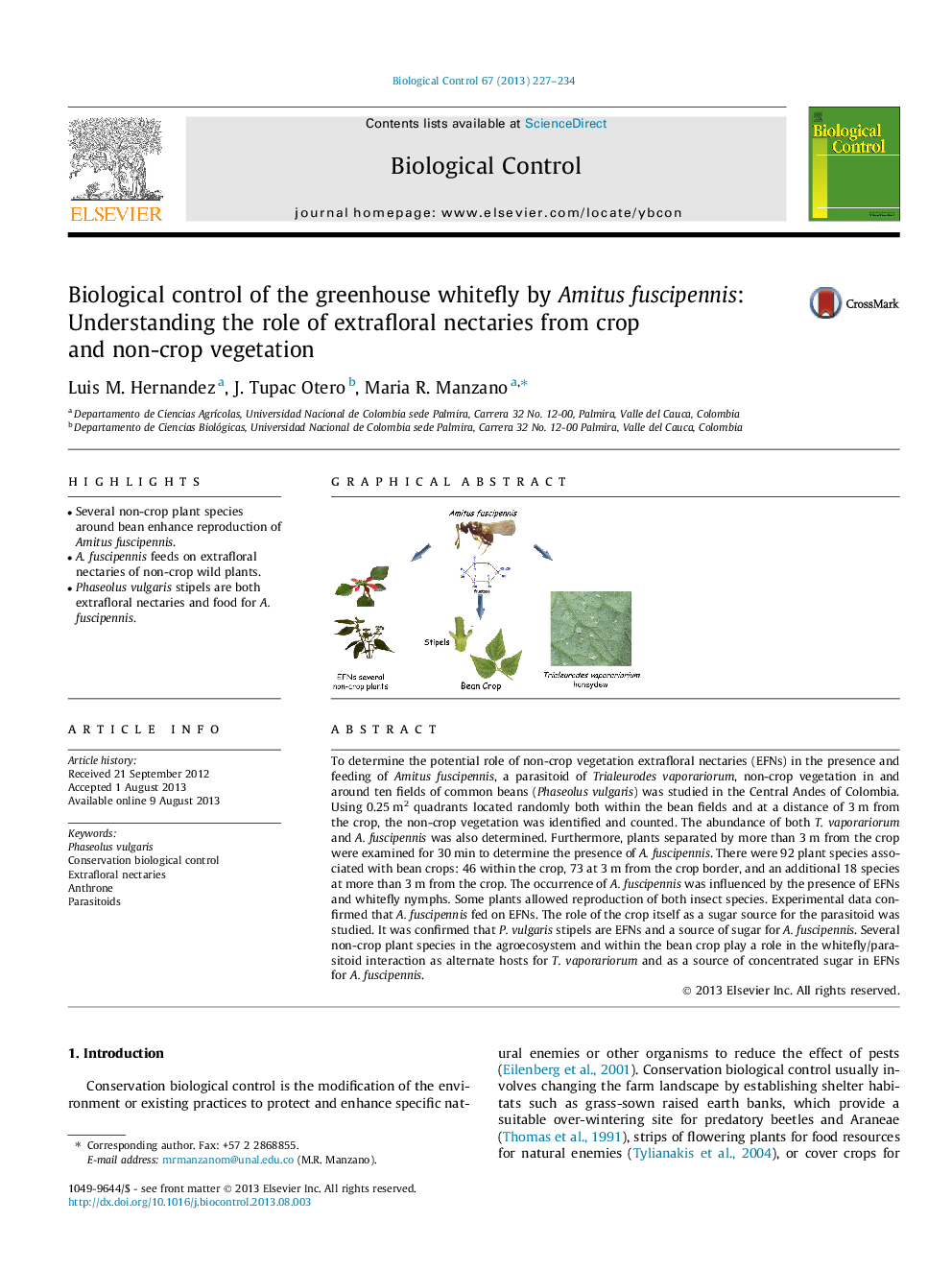| Article ID | Journal | Published Year | Pages | File Type |
|---|---|---|---|---|
| 4504055 | Biological Control | 2013 | 8 Pages |
•Several non-crop plant species around bean enhance reproduction of Amitus fuscipennis.•A. fuscipennis feeds on extrafloral nectaries of non-crop wild plants.•Phaseolus vulgaris stipels are both extrafloral nectaries and food for A. fuscipennis.
To determine the potential role of non-crop vegetation extrafloral nectaries (EFNs) in the presence and feeding of Amitus fuscipennis, a parasitoid of Trialeurodes vaporariorum, non-crop vegetation in and around ten fields of common beans (Phaseolus vulgaris) was studied in the Central Andes of Colombia. Using 0.25 m2 quadrants located randomly both within the bean fields and at a distance of 3 m from the crop, the non-crop vegetation was identified and counted. The abundance of both T. vaporariorum and A. fuscipennis was also determined. Furthermore, plants separated by more than 3 m from the crop were examined for 30 min to determine the presence of A. fuscipennis. There were 92 plant species associated with bean crops: 46 within the crop, 73 at 3 m from the crop border, and an additional 18 species at more than 3 m from the crop. The occurrence of A. fuscipennis was influenced by the presence of EFNs and whitefly nymphs. Some plants allowed reproduction of both insect species. Experimental data confirmed that A. fuscipennis fed on EFNs. The role of the crop itself as a sugar source for the parasitoid was studied. It was confirmed that P. vulgaris stipels are EFNs and a source of sugar for A. fuscipennis. Several non-crop plant species in the agroecosystem and within the bean crop play a role in the whitefly/parasitoid interaction as alternate hosts for T. vaporariorum and as a source of concentrated sugar in EFNs for A. fuscipennis.
Graphical abstractFigure optionsDownload full-size imageDownload as PowerPoint slide
